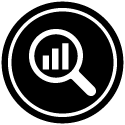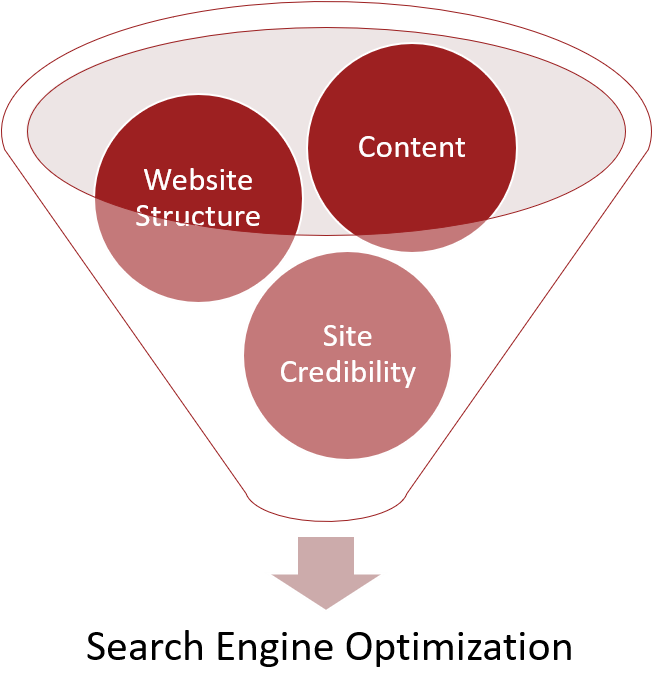Search Engine Optimization (SEO)
Is your website being found by potential customers on search engines like Google? Are you wondering how does SEO really work? If so, keep reading!
It is critically important to remember that web development goes beyond the look and feel of your website. There are numerous web design companies which know how to design a website that looks beautiful and functions well. But that does not mean they know how to best optimize your website for search engines.
And what good is a website if it looks good but can’t be found by your target market? In addition to providing a wide spectrum of website design services, Igniting Business also offers search engine optimization (SEO) services that truly deliver results.

What Is Search Engine Optimization (SEO), and Do I Need It for My Small Business?
Search Engine Optimization, known in the techie world as SEO, is the ever-evolving and rapidly changing combination of techniques that web developers employ to tame the beasts, known as search engines, which dictate your importance on the web (i.e. Google, Bing, Yahoo, etc.). These search engines factor in thousands of variables that form advanced algorithms that all determine how and where your website ranks within search engine results.
Does that sound very technical and perhaps even over-complicated?
If you said no, then we would recommend you start working for our company.
If you said yes, it is our hope that we can better inform you what Search Engine Optimization truly is and alleviate some of the myths and misconceptions about search engine optimization.
One critical concept that many clients, and even web designers, often overlook is the fact that you can have an incredible looking website, yet it performs poorly in the search engines. It does not matter how fancy your website is and how many bells and whistles it has if no one is able to ever find it.
The Core Components of SEO (Search Engine Optimiziation)
Even though search engines like Google and Bing look at thousands of different factors to figure out where a page should rank for a specific keyword search, we find they all boil down into three core categories. Additionally, as Google updates its search algorithms with new factors, we find that their changes to improve the search experience continue to fall into the following three core areas:
Website Structure
Website structure entails how your website is designed as far as the coding structure and format, and also how easy and efficiently you can navigate your website using the menu items and internal links. The ultimate focus here should be on creating the best user experience (UX) possible while balancing and abiding by the latest standards in quality design and coding principles.
Layout involves how you organize your content on each page, which communicates to the search engines what is the most important material and what should users look at first and foremost. Think of it as a teacher instructing the students what material and concepts are the most important to grasp for the exam. By implementing SEO tags and structured data, you help search engines better understand the context of your content.
Sometimes the search engine crawlers (also called robots, spiders, bots etc.) need a bit more information in order to index (record and interpret for search engine results) correctly. This is where robot commands, schema, 301 redirects, sitemaps, image maps, vectors, entities, meta tags, and plenty of other useful SEO tools come in handy.
Content
Arguably the most important aspect on your website is the content itself. In regards to SEO, content is still king! To be considered important, content must be useful, relevant (both to the searches and to the rest of your site), unique, fresh, and organized and emphasized in a coherent and logical manner. Additionally, Google rewards content that prioritizes information gain.
Bear in mind that content includes more than just static text. In fact, search engines like Google place an exceptional amount of emphasis on the use of rich media like video, audio, and image content. Currently, using video on the web is being rewarded significantly as it creates a richer user experience and is often the preferred method of consuming educational information.
Site Credibility
Most people know that it is useful to have other websites post a link to your website purely based off the fact that people may follow it to your website. However, search engines also use links, citations, and mentions for determining your website’s importance. A search engine looks at how many sites are linking to yours, what they are saying about your website, and the credibility of the websites referencing yours. Anytime a website links to your website, it is called a backlink, which can significantly help your website.
In other words, if other credible websites show that your site is important by posting a link to yours, search engines take that into account when calculating your page rank. However, negative penalties do exist for simply trying to gain a large amount of irrelevant inbound links. Finding the balance of earning credible and useful inbound links are essential to building your website's authority on the internet.
Additionally, there are many other methods of increasing your website's credibility including reputation management.
A successful SEO strategy must must focus on all three core areas and their subsequent ranking factors.

Tying It Together – Affordable SEO Services for Small Businesses
Recognizing that there are numerous factors that affect your search engine ranking is very critical. The next step is to work with a qualified search engine optimization company to develop a plan for designing and optimizing your website while catering to both the visitors and search engines. Igniting Business specializes in Search Engine Optimization and would be happy to sit down and work out an SEO plan that would assist you in reaching your goals of getting your website to rank well on search engines such as Google, Bing, and Yahoo, as well as AI powered systems like ChatGPT, Gemini, and Perplexity.
Ready to Improve your SEO and Increase Your Online Visibility?
If you would like to learn more about SEO for small businesses, please contact us to schedule a complimentary meeting with one of our SEO experts. We look forward to discussing how we can help boost your visibility and drive customers to your business.
Don't Have the Budget to Hire an SEO Expert?
We know that hiring a professional search engine optimization company to help you improve your rankings and drive leads may be outside of your budget. If you're a bit of a do-it-yourselfer (DIY), feel free to check out our recommended tools page or our Blog for various SEO tips and tricks.